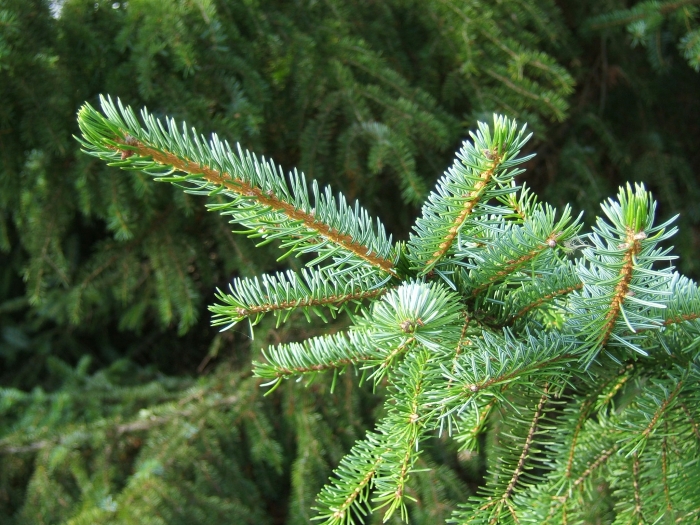Serbian Spruce
(Picea omorika)
Serbian Spruce (Picea omorika)
/
/

MPF assumed
CC BY 2.5
Image By:
MPF assumed
Recorded By:
Copyright:
CC BY 2.5
Copyright Notice:
Photo by: MPF assumed | License Type: CC BY 2.5 | License URL: https://creativecommons.org/licenses/by/2.5 | Uploader: MPF | Publisher: Wikimedia Commons | Title: Picea_omorika1.jpg | Notes: |































Estimated Native Range
Summary
Picea omorika, commonly known as Serbian Spruce, is an evergreen tree native to the limestone hills and mountains of Bosnia and Serbia, particularly thriving in riparian zones along riverbanks. This species is relatively slender, reaching 20 m (66 ft) tall under typical conditions, but can exceptionally grow up to 40 m (131 ft) with a trunk diameter of up to 1 m (3 ft). The Serbian Spruce has a conical crown with shoots that are buff-brown and densely pubescent. Its needle-like leaves are 10–20 mm long, dark blue-green above with a distinctive blue-white hue below, contributing to its ornamental value. The cones are notable for their fusiform shape and color transition from dark purple when young to dark brown upon maturation, 5–7 months after pollination.
The Serbian Spruce is highly regarded for its elegant crown form and adaptability to a variety of soil types, including alkaline, clay, acidic, and sandy soils, though it shows a preference for moist, well-drained loam. It is widely used as an ornamental tree in large gardens and urban landscapes across northern Europe and North America. Its tolerance to part shade makes it versatile for different garden settings, and it requires medium amounts of water. While generally pest-resistant, it can be susceptible to spruce needle rust and cytospora canker. It is not known for aggressive roots or significant invasiveness outside its native range, making it a safe choice for many gardeners.CC BY-SA 4.0
The Serbian Spruce is highly regarded for its elegant crown form and adaptability to a variety of soil types, including alkaline, clay, acidic, and sandy soils, though it shows a preference for moist, well-drained loam. It is widely used as an ornamental tree in large gardens and urban landscapes across northern Europe and North America. Its tolerance to part shade makes it versatile for different garden settings, and it requires medium amounts of water. While generally pest-resistant, it can be susceptible to spruce needle rust and cytospora canker. It is not known for aggressive roots or significant invasiveness outside its native range, making it a safe choice for many gardeners.CC BY-SA 4.0
Plant Description
- Plant Type: Tree
- Height: 50-60 feet
- Width: 15-20 feet
- Growth Rate: Rapid
- Flower Color: N/A
- Flowering Season: Non-Flowering
- Leaf Retention: Evergreen
Growth Requirements
- Sun: Full Sun, Part Shade
- Water: Medium
- Drainage: Slow, Medium, Fast
Common Uses
Bird Garden, Border Plant, Deer Resistant, Drought Tolerant, Fragrant, Low Maintenance, Potted Plant, Rabbit Resistant, Rock Garden, Street Planting
Natural Habitat
Limestone hills and mountains, particularly riparian zones along riverbanks
Other Names
Common Names: Pančić Spruce, Serbische Fichte, Omorikafichte, Picea Balcanica, Servische Spar, Serbgran
Scientific Names: , Picea omorika, Picea omorika f. pendula, Pinus omorika, Abies omorika,
GBIF Accepted Name: Picea omorika (Pancic) Purk.